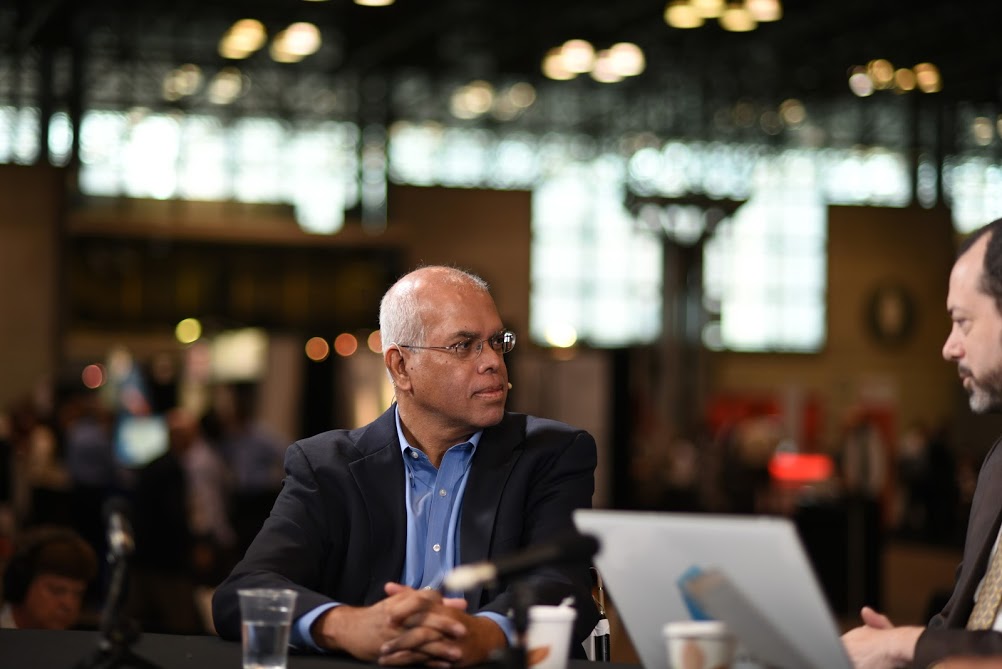 NEWS
NEWS
 NEWS
NEWS
 NEWS
NEWS
Vinnie Mirchandani, CEO of Deal Architect, Inc. and author of numerous books about technology, has a new reader coming out this fall titled Silicon Collar: A celebration of outstanding workers and machines that help them excel. The book examines the opportunities of today’s worker, sorts through the pessimism of being replaced by machines, and analyzes the history of technology and the workplace.
While at Inforum 2016, at the Javits Center in New York City, Mirchandani stopped by theCUBE, from the SiliconANGLE Media team, to talk to cohosts Dave Vellante (@dvellante) and George Gilbert (@ggilbert41) about the new book and his findings.
“In [the book] Silicon Collar, the premise is that we are no longer blue-collar, white-collar, brown-collar workers. We are all silicon-collar workers because technology has become an integral part of our jobs,” Mirchandani stated. He interviewed more than 50 businesses for the book, from the Golden State Warriors to KPMG, LLP to understand the impact that technology is having on different types of businesses.
The book has three themes: How the nature of jobs is changing in businesses, the pessimism about machines taking over jobs and the distorted view of jobless futures, and lastly blaming machines for the mistakes of humans in the labor economy.
Responding to Vellante’s question about how it is human nature to fear technology, Mirchandani explained that it all comes down to the three Ds: Dull, Dirty and Dangerous tasks. “As a society, we want those to be automated; we want workers to keep evolving and become more creative with more innovative stuff,” he said, noting that the problem is that some people cling to the three D jobs and worry about being replaced.
According to Mirchandani, the rapid growth rate of technology adds to the pessimistic mood that machine learning is evolving so quickly that it will replace us all. He took this idea and performed a historical analysis in the grocery and automobile industry. He discovered that it generally takes 15 to 20 years for automation to dramatically impact jobs. “[We] technologists tend to hype up stuff sooner than we should,” Mirchandani asserted. He compared a number of technologies that were going to revolutionize industries and did not.
Mirchandani also discussed Infor and identified three areas where the company is standing out in the marketplace. He pointed to the various verticals that Infor is targeting to help grow, the fact that Infor is not trying to compete with Amazon for the data center and the investments Infor is making in services and people.
Watch the complete video interview below, and be sure to check out more of SiliconANGLE and theCUBE’s coverage of the Inforum 2016.
THANK YOU